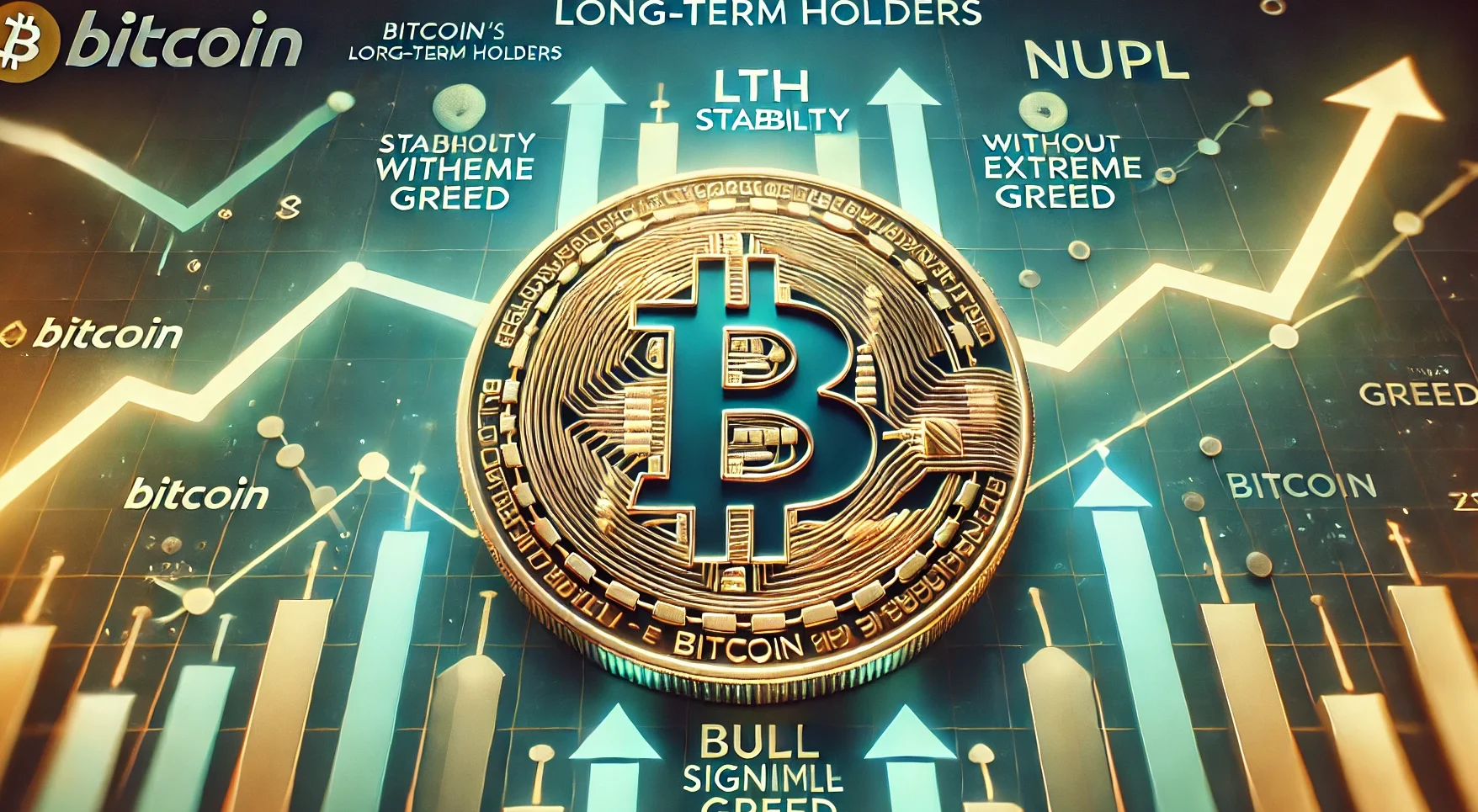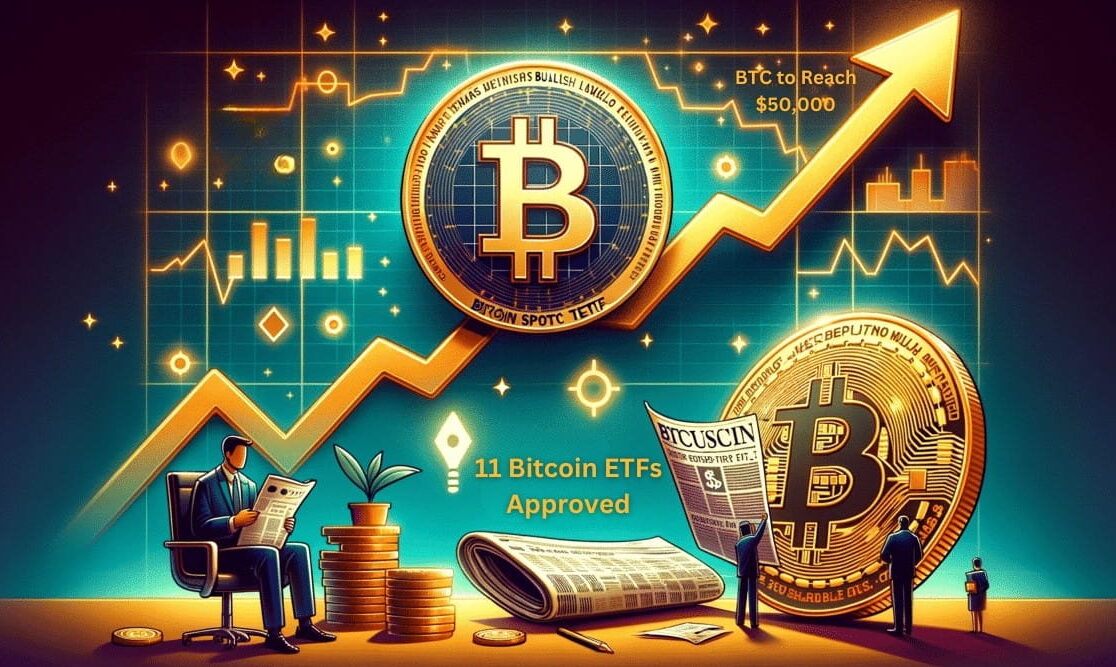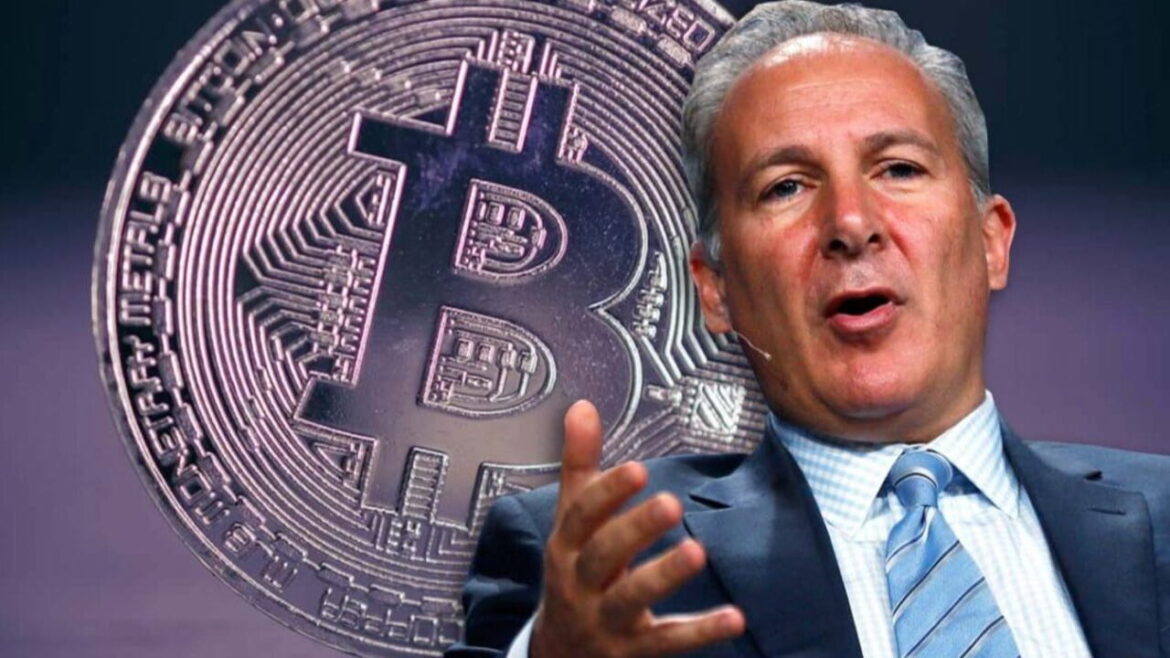Bitcoin News
A Bitcoin flash crash is one of the most dramatic and perhaps rewarding things that may happen in the world of digital assets. Even the most seasoned investors may be shocked by these sudden and dramatic price drops. Which can cause widespread panic across the market. But history shows that these kinds of drops often signal the start of big rallies. As Bitcoin drops again suddenly. Experienced traders and analysts are wondering if this is just market noise or the start of the next big accumulation phase.
Bitcoin Flash Crash and Recovery
A Bitcoin Enters Bullish flash crash occurs when the price drops rapidly, often in minutes or hours, due to liquidations, leveraged trades, and market panic. These crashes frequently coincide with a surge in sell orders and a lack of liquidity on trading platforms such as Binance. Coinbase.
 Or Kraken. Automated trading systems usually exacerbate the crash by selling off significant amounts of Bitcoin when prices are volatile. Which further lowers prices. However. As the free fall stops. Bitcoin has always bounced back just as quickly. Making a unique V-shaped recovery.
Or Kraken. Automated trading systems usually exacerbate the crash by selling off significant amounts of Bitcoin when prices are volatile. Which further lowers prices. However. As the free fall stops. Bitcoin has always bounced back just as quickly. Making a unique V-shaped recovery.
Historic Flash Crashes Spark Rallies
Several flash crashes that have occurred in the past have led to significant recoveries. Bitcoin dropped from more than $260 to about $50 in just a few hours in April 2013. By the end of the year. It had risen to more than $1,000. Bitcoin rose to $20,000 in 2017. But then fell from $2,900 to $1,800 before starting to rise again. The price plummeted below $4,000 in March 2020 because of fears about COVID-19. This was one of the most important examples. Bitcoin went up to over $60,000 in less than a year.
These events corroborate a strong narrative: flash crashes tend to eliminate weak hands and over-leveraged holdings, making it easier for long-term holders and institutional players to buy at lower prices. In this way, they often set the stage for the next big bull run.
Rising Fear Signals Bullish Sentiment
The Bitcoin dread and Greed Index shows that severe dread is on the rise. This is a classic contrarian indicator that often precedes price increases. In the past, times of anxiety have been good times for long-term investors to get in on the action.
On-chain statistics back up this feeling. According to Glassnode and CryptoQuant, there has been a significant increase in the amount of Bitcoin held by exchanges. This means that investors are moving their money into cold storage. This pattern indicates that people are becoming increasingly confident that prices will rise in the long term, as holders are less willing to sell in the near term. At the same time. Whale wallet activity is increasing, indicating that large investors are secretly purchasing more throughout the downturn.
Leverage Reset Fuels Market Stability
Leverage is significant in determining the volatility of Bitcoin’s price. When flash collapses occur, forced liquidations of leveraged long positions often exacerbate the decline. However. When leverage resets. The market typically settles down and builds momentum again in a more favorable environment.
Current open interest measures indicate a significant decline in leveraged trading, a sign of this market reset. The drop is a sign that the market is shedding speculative froth. Which will make it easier to generate profits in the future. This change, along with rising spot market volumes. Indicates that long-term investors who prefer to buy and hold rather than speculate in the near term are becoming increasingly interested.
Institutions Embrace Bitcoin Amid Turmoil
Even when things are rough, institutions still want to buy Bitcoin. Major companies like BlackRock, Fidelity, and ARK Invest continue to expand their crypto investment options. A few Bitcoin Spot ETFs have just been approved, which has opened the door even wider for money from traditional finance. This makes it easier than ever for both institutional and retail investors to get involved.
Additionally, macroeconomic issues such as high inflation, rising interest rates, and currency devaluation are making Bitcoin more attractive as a means to protect oneself from fiat risk. As more and more investors lose faith in central banks, Bitcoin’s appeal as a decentralised asset with a limited supply is growing.
Halving Cycle Signals Bitcoin Surge
If history repeats itself, the latest flash crash could mark the beginning of another prolonged rise. The price of Bitcoin is expected to fluctuate due to its upcoming halving event, which is less than a year away. Before each preceding halving cycle, there was a period of significant accumulation, followed by rapid growth. For those familiar with how Crypto Market operate, a brief dip could be an opportune time to buy in.
 Investor behavior, sentiment indicators, on-chain statistics, and macroeconomic factors all suggest that Bitcoin may be entering a period of undervalued opportunity. The long-term case for Bitcoin remains strong, despite short-term volatility. This is because more people are using it, the rules are more straightforward, and an increasing number of institutions are interested in it.
Investor behavior, sentiment indicators, on-chain statistics, and macroeconomic factors all suggest that Bitcoin may be entering a period of undervalued opportunity. The long-term case for Bitcoin remains strong, despite short-term volatility. This is because more people are using it, the rules are more straightforward, and an increasing number of institutions are interested in it.
Final thoughts
Bitcoin flash collapses, while scary at the time, have been some of the finest times to invest in the crypto market. The next big surge could be on the way now that leveraged positions have been cleared out and sentiment is close to its lowest point. As in past cycles. People who act with conviction when they are scared often reap the most benefits when confidence returns.
When the market changes. Investors should look beyond the short-term noise and consider the long-term picture. If history is any indicator. What looks like a loss today could be the start of tomorrow’s gains.




 Leading blockchain analytics firms like Glassnode and CryptoQuant track Bitcoin ownership by long-term addresses. This cumulative trend is especially obvious now, when retail interest and speculative trade volumes are low. Buyers replace sellers as prices decline. So they expect value to rise. These actions mirror bull cycles. Prior to this, long-term ownership controlled supply and reduced market liquidity. Prices rose. Lower selling pressure and tighter supply test and maybe break new highs.
Leading blockchain analytics firms like Glassnode and CryptoQuant track Bitcoin ownership by long-term addresses. This cumulative trend is especially obvious now, when retail interest and speculative trade volumes are low. Buyers replace sellers as prices decline. So they expect value to rise. These actions mirror bull cycles. Prior to this, long-term ownership controlled supply and reduced market liquidity. Prices rose. Lower selling pressure and tighter supply test and maybe break new highs. People in the market are also starting to feel cautiously hopeful. The fear and greed index remains neutral, but more people are investing in crypto-focused products, and search interest in Bitcoin-related phrases is starting to increase again, albeit slowly. There is also a rise in social media activity and development activity related to Bitcoin protocols, which is a positive sign.
People in the market are also starting to feel cautiously hopeful. The fear and greed index remains neutral, but more people are investing in crypto-focused products, and search interest in Bitcoin-related phrases is starting to increase again, albeit slowly. There is also a rise in social media activity and development activity related to Bitcoin protocols, which is a positive sign.
 Forced selling typically occurs when organizations need to raise liquidity quickly, regardless of prevailing market prices. For corporations, this could arise from declining revenues, cash flow pressures, or regulatory changes. In such cases, Bitcoin becomes a high-risk asset that could be liquidated swiftly to protect core operations. Such transactions may flood the market with large amounts of BTC, contributing to rapid price declines and triggering broader panic among retail and institutional investors alike.
Forced selling typically occurs when organizations need to raise liquidity quickly, regardless of prevailing market prices. For corporations, this could arise from declining revenues, cash flow pressures, or regulatory changes. In such cases, Bitcoin becomes a high-risk asset that could be liquidated swiftly to protect core operations. Such transactions may flood the market with large amounts of BTC, contributing to rapid price declines and triggering broader panic among retail and institutional investors alike. Over time, better accounting norms. Such as treating digital assets at their fair value. Could also encourage more people to use them. In the meantime, more explicit rules will help businesses better understand the costs of following the rules and the consequences of breaking the law. For now, the best ways for corporate treasurers who are aware of risk to protect themselves are to exercise caution and diversify their investments.
Over time, better accounting norms. Such as treating digital assets at their fair value. Could also encourage more people to use them. In the meantime, more explicit rules will help businesses better understand the costs of following the rules and the consequences of breaking the law. For now, the best ways for corporate treasurers who are aware of risk to protect themselves are to exercise caution and diversify their investments.
 Data from Glassnode and CryptoQuant shows long-term holders’ accumulation; numerous wallets with Bitcoin market rebound for over 155 days show no selling. New wallets and transaction volumes have increased network activity and change. These indicators reflect market confidence rising and individual and institutional investors returning following the slump. Bitcoin ETFs’ success fuels the recovery. Recently, BlackRock’s iShares Bitcoin Trust and Fidelity’s Wise Origin Bitcoin Fund have seen considerable inflows, indicating Wall Street’s demand for digital assets. This money is becoming a primary entryway for conventional investors wishing to invest in Bitcoin, supporting its developing asset class status.
Data from Glassnode and CryptoQuant shows long-term holders’ accumulation; numerous wallets with Bitcoin market rebound for over 155 days show no selling. New wallets and transaction volumes have increased network activity and change. These indicators reflect market confidence rising and individual and institutional investors returning following the slump. Bitcoin ETFs’ success fuels the recovery. Recently, BlackRock’s iShares Bitcoin Trust and Fidelity’s Wise Origin Bitcoin Fund have seen considerable inflows, indicating Wall Street’s demand for digital assets. This money is becoming a primary entryway for conventional investors wishing to invest in Bitcoin, supporting its developing asset class status. Rising open interest in futures markets and financing rates turning positive indicate recovering market-wide liquidity as well. These are early hints that the correction might have reset overbought circumstances and given the basis for a more sustained upswing.
Rising open interest in futures markets and financing rates turning positive indicate recovering market-wide liquidity as well. These are early hints that the correction might have reset overbought circumstances and given the basis for a more sustained upswing.
 The U.S. may benefit from worldwide demand for distributed digital assets by adopting Bitcoin. Bitcoin’s acceptance by financial institutions and developing nations threatens the global view of money centralisation. As VanAlseosed oversees and tracks China’s digital yuan, this development challenges the predominance of centralised monetary systems. Vance proposes determining the path of global financial infrastructure to support democratic values and economic potential. Bitcoin supporters support unrestricted creativity, personal freedom, and market competitiveness.
The U.S. may benefit from worldwide demand for distributed digital assets by adopting Bitcoin. Bitcoin’s acceptance by financial institutions and developing nations threatens the global view of money centralisation. As VanAlseosed oversees and tracks China’s digital yuan, this development challenges the predominance of centralised monetary systems. Vance proposes determining the path of global financial infrastructure to support democratic values and economic potential. Bitcoin supporters support unrestricted creativity, personal freedom, and market competitiveness. Texas and parts of the Midwest are Bitcoin mining hubs thanks to cheap, clean electricity and welcoming laws. Since Bitcoin may be financially viable, this geographic advantage could be leveraged to maintain U.S. hegemony in blockchain technology and secure supply chains for prospective funding. It enables faster and cheaper cross-border transactions compared to conventional banking systems, making it crucial for remittances and economic participation in low-income areas in the US and abroad. By encouraging Bitcoin, the US can improve its leadership in global financial access and innovation.
Texas and parts of the Midwest are Bitcoin mining hubs thanks to cheap, clean electricity and welcoming laws. Since Bitcoin may be financially viable, this geographic advantage could be leveraged to maintain U.S. hegemony in blockchain technology and secure supply chains for prospective funding. It enables faster and cheaper cross-border transactions compared to conventional banking systems, making it crucial for remittances and economic participation in low-income areas in the US and abroad. By encouraging Bitcoin, the US can improve its leadership in global financial access and innovation.
 Another interesting statistic, the MVRV ratio (Market Value to Realised Value), indicates that the market valuation has historically been neutral-that is, neither overbought nor oversold. This allows considerable upward movement before speculative excesses begin to develop.
Another interesting statistic, the MVRV ratio (Market Value to Realised Value), indicates that the market valuation has historically been neutral-that is, neither overbought nor oversold. This allows considerable upward movement before speculative excesses begin to develop. Retail investors, who were shaken out during the previous bear cycle, are slowly returning as confidence is restored. As this new wave of retail demand meets reduced circulating supply, the potential for a parabolic rally becomes increasingly likely.
Retail investors, who were shaken out during the previous bear cycle, are slowly returning as confidence is restored. As this new wave of retail demand meets reduced circulating supply, the potential for a parabolic rally becomes increasingly likely.
 The emergence of Bitcoin price prediction ETFs indicates rising regulatory acceptance in essential markets such as the United States and Europe. While talks on spot Bitcoin ETFs go on, regulatory authorities, including the U.S. Securities and Exchange Commission (SEC), have shown wary openness to Bitcoin futures-based ETFs. This changing structure directly influences investor confidence, influencing the market value of Bitcoin.
The emergence of Bitcoin price prediction ETFs indicates rising regulatory acceptance in essential markets such as the United States and Europe. While talks on spot Bitcoin ETFs go on, regulatory authorities, including the U.S. Securities and Exchange Commission (SEC), have shown wary openness to Bitcoin futures-based ETFs. This changing structure directly influences investor confidence, influencing the market value of Bitcoin. On-chain analytics provide further insight, indicating declining BTC balances on exchanges, implying lower selling pressure. Wallets with high BTC levels indicate confidence among institutional and long-term retail investors. Bitcoin’s hash rate, which measures network security and miner activity, has achieved record highs, another sign of network health. The Crypto Fear & Greed Index indicates modest optimism. This balanced approach suggests that investors are enthusiastic but cautious, which is desirable after continuous price increases.
On-chain analytics provide further insight, indicating declining BTC balances on exchanges, implying lower selling pressure. Wallets with high BTC levels indicate confidence among institutional and long-term retail investors. Bitcoin’s hash rate, which measures network security and miner activity, has achieved record highs, another sign of network health. The Crypto Fear & Greed Index indicates modest optimism. This balanced approach suggests that investors are enthusiastic but cautious, which is desirable after continuous price increases.
 Furthermore, the increasing acceptance of Bitcoin as a Treasury asset by publicly traded companies, led by MicroStrategy under Michael Saylor’s direction, adds credibility and generates actual demand. Further embedding cryptocurrencies into daily life are PayPal’s development of crypto payment methods and Visa’s integration of Bitcoin payment choices. These advances increase the practical applications of Bitcoin outside of speculation.
Furthermore, the increasing acceptance of Bitcoin as a Treasury asset by publicly traded companies, led by MicroStrategy under Michael Saylor’s direction, adds credibility and generates actual demand. Further embedding cryptocurrencies into daily life are PayPal’s development of crypto payment methods and Visa’s integration of Bitcoin payment choices. These advances increase the practical applications of Bitcoin outside of speculation.
 Geopolitical unrest, including continuous wars in Europe and the Middle East, has undermined faith in conventional economic institutions even further. This unstable environment has pushed money into non-sovereign assets, establishing Bitcoin as a consistent substitute for both gold and fiat money.
Geopolitical unrest, including continuous wars in Europe and the Middle East, has undermined faith in conventional economic institutions even further. This unstable environment has pushed money into non-sovereign assets, establishing Bitcoin as a consistent substitute for both gold and fiat money. These events point to a time when Bitcoin will be more than just a digital asset; it will be a geopolitical tool capable of changing national inflation control, foreign reserve management, and international trade policies.
These events point to a time when Bitcoin will be more than just a digital asset; it will be a geopolitical tool capable of changing national inflation control, foreign reserve management, and international trade policies.

